A lot of pixels and ink have been spilled over the last several decades discussing the ever-increasing automation in our cockpits and the challenges thereof. Some of those spills involve detailed directions on how to operate a specific piece of avionics equipment while others focus on the larger picture of how the equipment and the airframe/powerplant combination are integrated. These ink and pixel spills also have covered the various procedures and techniques pilots need to adopt to ensure they properly manage the automation, which is far from foolproof. This article is of that latter variety, highlighting the need to understand what I call the “buttonology” of flying advanced avionics: the techniques and procedures necessary to achieve the desired results.
As the term implies, configuring advanced avionics and “telling” the system what to do and when to do it involves knowledge of which button(s) to push and when. Even when flying highly integrated systems, which presumably require fewer configuration tasks, it’s critical that we monitor performance and are prepared to step in and make timely corrections to the avionics configuration or remove responsibility for flying the airplane from the automation and place it in our own lap.
In our experience, one of the most common occasions for errors in buttonology occur when setting up for an instrument approach and being vectored to the inbound course. It’s easy to miss a step along the way—like forgetting to monitor the nav indicators—and failing to push the proper button—selecting nav mode instead of heading mode, for example—at the proper time. Here’s an event where such a failure likely was critical to the outcome.
Background
On April 19, 2018, at 0843 Eastern time, a Cirrus SR22 impacted terrain near Williamsburg, Penn., during an attempted missed approach. The instrument-rated private pilot (male, 65) and the passenger were fatally injured. The airplane was destroyed, and a post-impact fire consumed most of the wreckage. Instrument conditions prevailed; an IFR flight plan had been filed.
The airplane was en route from Lancaster, Penn., to South Bend, Ind., when the pilot chose to divert to Altoona, Penn., “due to ice accumulation on the airplane.” At about 0842, ATC advised that the airplane had passed through the localizer for the ILS approach to Runway 21. The pilot requested another attempt at the approach and ATC issued vectors. At 0842:33, while at 4000 feet MSL, the airplane began a left standard-rate turn. At 0843:12, the airplane started to descend and its airspeed increased. At 0843:38, the airplane descended through 2525 feet in a tight, left spiraling turn. The final radar data point was recorded at 0843:52 at 1850 feet, with the airplane still descending in a tight left turn. Before the final left turn and descending spiral, the flight path and altitudes were normal with no erratic maneuvers or anomalies noted.
Investigation
The airplane impacted a field behind a residential property 9.5 miles northeast of the divert airport. The debris path was about 200 feet long, on a magnetic heading of 150 degrees and at 1025 feet MSL elevation. Evidence at the accident site was consistent with impact in a steep, nose-low, wings-level attitude.
Two of the three propeller blades were separated just outboard of the shank. The third blade remained attached to the hub and was bent aft around the engine’s left side and twisted toward low pitch. The leading edge of one of the separated blades exhibited deep gouges. Both the directional and turn coordinator gyros exhibited internal scoring and signs of rotation at impact. A post-impact fire consumed most of the wreckage, but all major airplane structural components were located within the debris field.
The airplane was an early-production SR22, with “steam-gauge” flight instruments, two Garmin GNS 430 navigators, an ARNAV multifunction display, an S-TEC 55X autopilot and a Sandel SN3308 electronic horizontal situation indicator. It was not approved for flight into known icing conditions.
At 2127 the night before the flight, the pilot obtained a weather briefing and filed an IFR flight plan for an 0645 departure on the day of the accident. That forecast included cloud cover, snow showers and instrument conditions. No records were found indicating the pilot retrieved any other weather information before or during the flight.
Weather forecasts and observations available on the morning of the flight indicated a 60-to-85-percent probability of light-to-moderate icing above the accident site between 4000 to 6000 feet MSL, with as much as a 40-percent probability of supercooled liquid droplets, arguably the worst kind of icing, over the accident site at the time the aircraft flew through the area.
Probable Cause
The NTSB determined the probable cause(s) of this accident to include: “The pilot’s failure to obtain an updated weather briefing before the flight and his subsequent loss of airplane control due to spatial disorientation while maneuvering in instrument meteorological conditions during a diversion to an alternate airport after encountering forecast icing conditions.”
According to the NTSB, “radar data showed that the airplane was flying a relatively smooth and consistent flightpath with altitude and heading changes that were indicative of the pilot using the autopilot for a majority of the flight, until the final turn after flying through the localizer course. The pilot’s failure to recognize that he had not intercepted the localizer is consistent with his failure to appropriately configure the avionics for the approach or with his attention being diverted from navigational tasks due to his workload while trying to conduct the approach.” Spatial disorientation followed, and the pilot was unable either to recognize the situation and/or recover the airplane in time.
One thing we don’t know about this accident is how much ice the airplane had picked up and, consequently, how compromised its aerodynamics were. While it’s possible it was carrying a lot of ice and stalled, its behavior more closely aligns with the pilot losing control while wrestling with his failure to properly configure/reconfigure the avionics. In the final analysis, it could have been as simple as failing to push the CDI button on the 430 or the nav button on the autopilot.
Autopilot Awareness
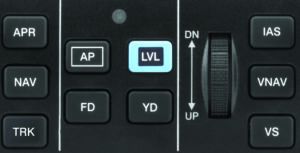
The FAA’s Advanced Avionics Handbook, FAA-H-8083-6, includes a wealth of material on managing the magic in our panels. When it comes to autopilots, the Handbook notes that “some autopilots are capable of automatically switching from one function to another. These automatic mode changes can complicate the task of maintaining mode awareness, but every autopilot has some form of flight mode annunciator that shows which autopilot functions are currently engaged…. It is important to develop two habits:”
- Checking the flight mode annunciator after entering a command to ensure the desired function is indeed armed or engaged, as appropriate.
- Including the flight mode annunciator in your instrument and panel scans to maintain awareness of what mode is active and what is armed to activate next.
Aircraft Profile: Cirrus SR22
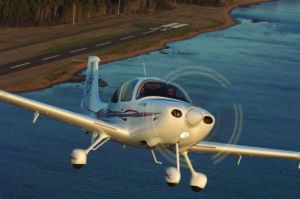
OEM Engine: Continental IO-550
Empty Weight: 2250 lbs.
Maximum Gross Takeoff Weight: 3400 lbs.
Typical Cruise Speed: 170 KTAS
Standard Fuel Capacity: 81 gal.
Service Ceiling: 17,500 feet
Range: 1049 NM
VS0: 59 KIAS
Jeb Burnside is the editor-in-chief of Aviation Safety magazine. He’s an airline transport pilot who owns a Beechcraft Debonair, plus the expensive half of an Aeronca 7CCM Champ.
This article originally appeared in the April 2021 issue of Aviation Safety magazine.
For more great content like this, subscribe to Aviation Safety!



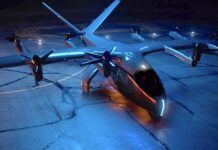
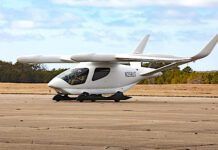
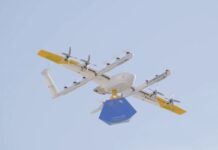
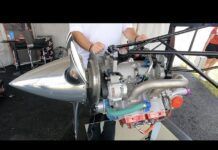





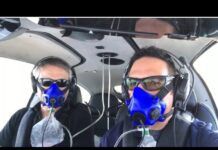

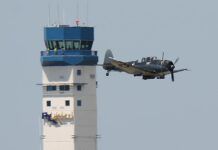
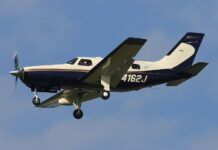

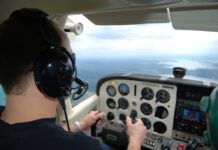

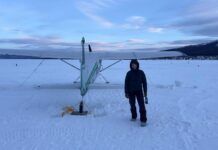

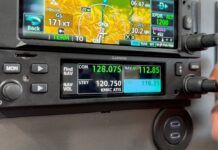
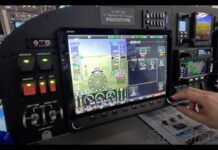











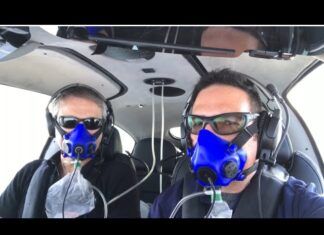
When I instructed in C-5As, I told my students “when you push the button, you are ordering from the drive through window…but the FMAs are what’s in the bag. And like Joe Pesci says, ‘They f*!k you at the drive through!’, so watch those FMAs!”
Any info on recent experience/proficiency? My view, if you want to let the avionics fly, you better set aside 2x proficiency time for both hand flying and avionics management.
I have seen folks who think that proficient aerobatic flying is high risk will blissfully tickle icing conditions in a non-icing airframe lulled by the magic of their high-end avionics, ignorant they are engaged in a game of Russian roulette hoping icing doesn’t get worse in the next cloud. When that autopilot finally gives up trying to fly with the ice, you better be a really good, proficient test pilot to handle the surprise when George drops the airplane in your lap.
You’re certainly right, Mr. Rich R.
How many pilots have been killed by the confounding user-interface of a GPS navigator while wondering, “why is it doing that?”
Funny thing, this topic had already risen to the top of my list of peeves only a week ago.
I just had two instrument students come to me, one new to instrument flight and the other a “rusty pilot” getting back into flying and needing an instrument proficiency check. The new pilot, who I know is a VERY proficient VFR pilot and aerobatic competitor (meaning she had excellent stick-and-rudder skills) was a bit traumatized because she was lost in the cockpit trying to hand-fly the aircraft and figure out the GPS/FMS as the same time, let alone talk to ATC on the radio. Her 400 hour part 141 CFI hadn’t helped. The rusty gentleman was in the same boat. In both cases I put them in the sim, reached over, turned off the GPS/FMS, and then said, “We are just going to fly the airplane and intercept some VOR radials.” I showed how power and trim presets would predispose the aircraft to a particular airspeed and climb rate. At that point both of them settled down to fly the airplane competently.
“Automation” is an interesting double-edged sword. Yes, it is very cool what it can do but I know that, every time I have become overloaded in the cockpit, it has been because the “automation” has pushed me over the edge while trying to get the “automation” to do something unplanned. At the risk of sounding like “that old guy”, VOR/LOC/GS is dirt simple by comparison — select frequemcy, turn OBS, fly airplane.
I no longer want that fancy all-glass cockpit with 42 buttons and knobs, many which are overloaded by menus (“I know that feature is here somewhere. Which menu was it?”) for instrument training. I need my student to become proficient at FLYING the airplane first, navigating second, and communicating third. Once they become proficient at being an instrument pilot, then and only then, do I want to introduce the wonders of all that glass.
And yes, I DO teach autopilot use. It becomes especially important when you need to be heads-down over the GPS/FMS after saying, “I wonder why it did that?”
Jeb,
I think it is misleading to show a picture of the Cirrus Garmin 700 autopilot control panel with a LVL button when the accident airplane had the STEC 55x (which is much less capable), particularly when the webFlash email shows that image as the story lead picture.
David
No argument on accuracy, but the point of the discussion is too much technology (not too little) for this pilot’s proficiency or too much ice for any autopilot in a non-ice airframe.